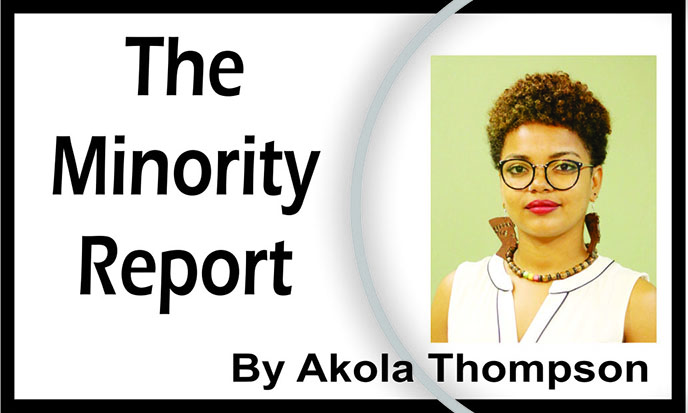What drives someone to take their own life? This is a question that many have pondered as news of completed suicides reach them. They try to analyze their last few moments with the deceased, going over every detail of their life in hopes of understanding the rationale behind the act. The popularized narrative that suicide is preventable if only certain steps are followed also contributes to the belief that they could have changed the outcome.
Complicated and often misunderstood, suicide remains one of Guyana’s most pressing public health crises. Not so long ago, we were referred to as the suicide capital of the world with a rate of 44 per 100, 000 persons in a population of under one million. Since that classification, slow strides have been made with regard to suicide prevention efforts. While there has been a slight decrease in suicide rates, the numbers still remain alarmingly high. Clouded in shame and stigma, discussions surrounding suicide and suicidal ideations are hushed up and ignored as attention seeking. What this of course does is further promote feelings of alienation and isolation in those who might instead benefit from community support.
Existing in an individualistic culture that promotes competition and places low emphasis on empathy, persons having suicidal ideations might be fearful of reaching out for help due to feelings of shame and concerns over confidentiality. As someone who has battled with suicidal ideations, I know how draining and isolating it can be. Sometimes you are cloaked in feelings of inadequacy and a cosmic loneliness that can seem unwavering. A lot of this is hidden behind the masks we choose to wear so that many do not notice and those who do are usually at a loss at how to offer help and support.
There is no one reason behind suicide, usually there are several factors at play working against the person such as trauma, mental illness and poverty. Many who suffer from suicidal ideations and ultimately go through with the act, are those who have gone through traumatic incidents in their lives such as physical abuse, rapes and police violence. Trauma of course affects the mental, emotional and physical well-being of a person often seeing the development of mental illnesses and impacting their ability to get and maintain healthy relationships and jobs. Trauma can also contribute to the development of co-occurring disorders such as substance abuse that can make a person more vulnerable to suicidal thoughts and actions. Given the way in which our culture promotes strength, particularly in men – many survivors of trauma are unable to recognize or acknowledge the symptoms birthed from their trauma and turn to alcohol and drugs in an attempt to cope.
While mental illness is often a culprit in attempted and completed suicides however, this has resulted in the unfortunate medicalization of suicide. Every suicide is now subject to a psychological post-mortem and labeled as a result of a mental disorder. What this does is remove suicide from the sphere of social, cultural and historical factors such as despair, inequality and displacement. Our family histories – rooted in colonialism, enslavement, Indentureship and the violent social, political and economic ramifications emanating from these systems – are not things that are usually considered in the conversations surrounding suicide. Fundamentally stripping away collectivist cultures and creating an environment of inequality and underdevelopment has resulted in the passing down of intergenerational trauma and unequal power systems that severely impact our health and ability to exist in the world.
Often the well intentioned, upon recognizing someone may be going through recent distressing changes or suffering from things such as depression or anxiety would suggest exercise, better diets and a “can-do attitude” for the calming of a stressed mind. While these individual suggestions are not bad and can have some positive effects on the well-being of a person, the fact is that suicidal thoughts and actions are not things that can be done away with through some time at the gym and the sheer will to get better. Many persons require extensive therapy and medication to temper their symptoms and help with unravelling the root of their problems and gaining healthy coping mechanisms. However, the low number of mental health professionals and counselors, matched with the often restrictive cost of getting professional help can see many persons being unable to access appropriate care.
Poverty continues to play a large role in suicidal ideations and act. In many cases poverty is a cause and effect of mental illnesses that can trigger suicidal thoughts. Faced with constant financial uncertainty and the consequences that come with that such as inadequate or no access to housing, food insecurity and low educational attainment can see persons falling into despair and hopes of leaving their worries behind them for good.
Given our still distressingly high unemployment and poverty rates, more attention needs to be placed on ensuring the economic rights and opportunities of our nation’s people are being prioritized. Our medicalization of suicide has seen us focusing solely on therapy and medication as a cure all. The fact is that a mother of three does not necessarily need to medicate and talk her problems away – what she needs is money to ensure she has access to food for her children and the ability to maintain a roof over their heads. Behind the suicide of most, there is a long fought battle that became too overwhelming to bear. In our conversations and responses towards suicide prevention, we should seek out ways in which we can truly aid in the fight against its continued commonality amongst our population.






